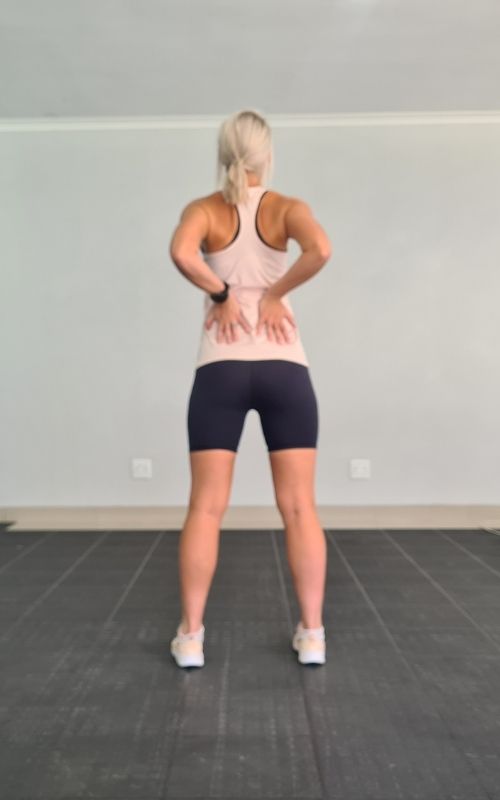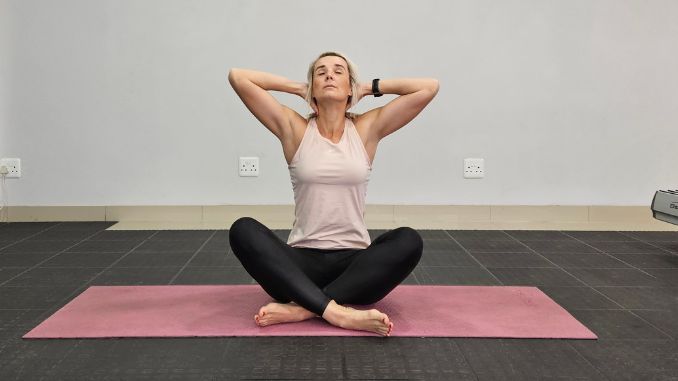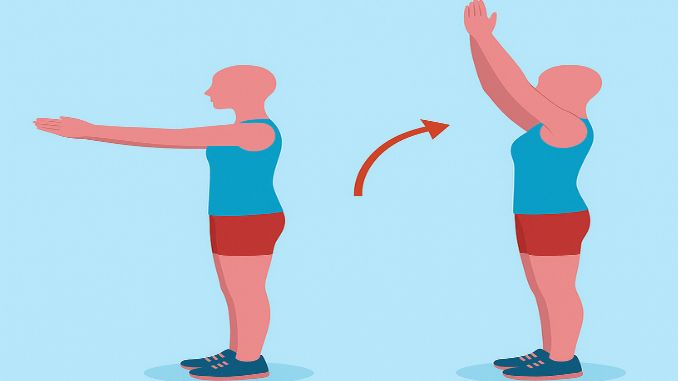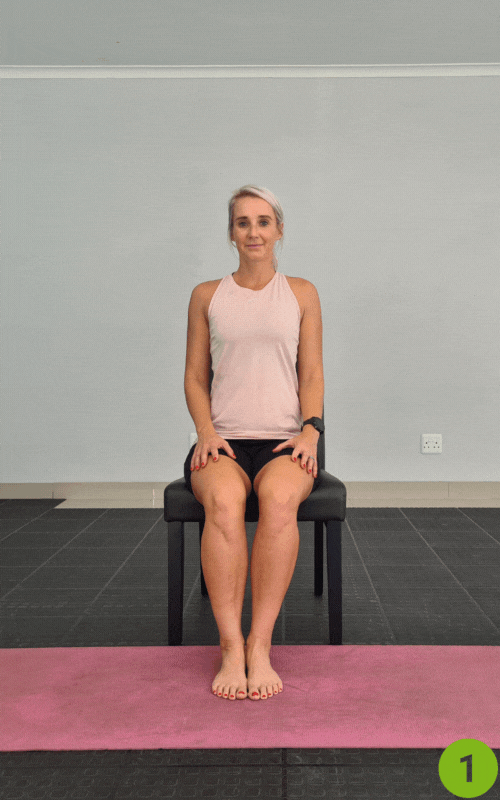Poor posture is more common than most people realize. From long hours sitting at a desk to constantly looking down at phones, our daily habits often strain the spine and weaken back muscles. As a result, over time, these habits can lead to back pain, stiffness, and even long-term health issues.
The good news? You can improve your posture and relieve back pain with simple, effective exercises. Also, these movements strengthen the right muscles, release tension, and retrain your body to maintain good posture naturally.
Why Good Posture Matters?

Poor posture affects more than how you look—it directly impacts your health. Moreover, sitting too long, slouching forward, or constantly looking down at your phone can strain your spine, tighten your chest, and weaken back muscles. As a result, this leads to back pain, stiff shoulders, and fatigue.
On the other hand, maintaining good posture helps reduce stress on your joints, improves breathing, and keeps your spine in its natural alignment. Additionally, with proper posture, you’ll move more efficiently, feel less pain, and support long-term health.
Benefits of Proper Posture
- May help relieve lower back and neck pain [1]
- Prevents disc degeneration [2] and muscle strain
- Also, supports better breathing and circulation.
- Boosts energy, focus, and core strength
4 Easy Posture Exercises for Back Pain Relief
These postural correction exercises require no equipment and can be done at your desk, at home, or at the gym.
1. Shoulder Blade Pinch

Starting position: Stand with feet hip-width apart, shoulders back.
Movement: Squeeze your shoulder blades together, hold for 2–5 seconds, then release.
Reps: 10 repetitions.
Additionally, helps improve your posture by waking up the upper back muscles and reversing slouching.
2. Single Shoulder Roll
Starting position: Sit or stand tall.
Movement: Roll one shoulder up, back, and down. Switch sides.
Reps: 5 on each side.
Moreover, loosens tight chest muscles and promotes proper posture.
3. Opening Up the Elbows

Starting position: Place your hands behind your head, elbows pointing forward.
Movement: Open your elbows wide, stretch your chest, then return to the starting position.
Reps: 5 repetitions, holding each stretch 2–3 seconds.
Moreover, opens the chest and strengthens back muscles to correct posture.
4. Overhead Arm Sweep

Starting position: Arms straight out in front, palms facing each other.
Movement: Lift arms overhead, arch slightly through the upper back, then return to the starting position.
Reps: 5–8 repetitions.
Moreover, mobilizes the spine, stretches the chest, and re-engages posture muscles.
More Posture Correction Exercises to Try

If you spend long hours sitting, add these exercises to help balance your body:
- Chin Tucks: Strengthen neck muscles, prevent forward head posture.
- Hip Flexor Lunge Stretch: Relieves also tight hips from sitting. Moreover, hold for 30 seconds on each side.
- Glute Bridge: Lie on your back, knees bent, feet flat on the floor. Then, lift hips into a straight line and squeeze glutes. Hold for 10 seconds.
- Plank: Strengthens your core and supports proper posture. Hold 30 seconds.
- Cat-Camel Stretch: On hands and knees, arch and round your spine to mobilize the back. Repeat 5 times.
- Child’s Pose: Kneel, sit back on heels, stretch arms forward, and hold for 20–30 seconds.
In a Self feature published today, Kellen Scantlebury, DPT, CSCS, a physical therapist at Fit Club NY, shares a highly effective movement for improving posture and easing upper‑back pain: the I‑Y‑T exercise. This involves positioning the arms in three shapes—I (straight overhead), Y (45° angle), and T (out to the sides)—to specifically target the middle and lower trapezius, rhomboids, and rear deltoids. According to Scantlebury, this exercise improves scapular stability, reduces tension on the rotator cuff, and helps counteract poor posture patterns like slouching or rounded shoulders. He recommends starting with bodyweight on the floor and gradually progressing to standing, even adding light weights over time, and performing three rounds of 10–15 reps.
Posture Exercises at Your Desk

- Sit tall with feet flat on the floor.
- Every 30 minutes, stand up and stretch.
- Then, roll your shoulders backward and squeeze your shoulder blades together.
- Engage your core while sitting to reduce pressure on your lower back.
These quick movements prevent stiffness and help fix posture for back pain, even during busy workdays.
Takeaway
Bad posture [3] doesn’t have to be permanent. With consistent postural correction exercises, you can reduce pain, strengthen your back, and improve your health. **Remember—**good posture is about balance, not perfection.
Start small: practice a few stretches daily, keep your shoulders back, and remind yourself to sit and stand tall. Over time, your body will gradually adapt to better alignment with consistent practice
Correcting posture is just the beginning. If you’re struggling with nagging aches, stiffness, or chronic discomfort, you may need a more complete plan to restore strength and mobility. Check out our Low Back Pain Solved!
FAQ’s
How often should I do posture correction exercises to see improvement?
Most physical therapists suggest performing posture‑targeted exercises at least 3–4 times a week for consistent results. Moreover, consistency builds strength, alignment and reduces strain.
Is lying on my stomach—“adult tummy time”—an effective posture exercise?
Yes, “adult tummy time” can be helpful. It involves lying prone (on your stomach), which counters forward-head and rounded-shoulder posture by encouraging neck and back extension. However, it’s not a cure-all and should be complemented with ergonomic adjustments and postural correction exercises. It’s also not suitable for everyone—especially if you have spinal conditions, recent surgery, or osteoporosis. Start gradually and stop if pain develops.
Are posture exercises enough, or do I need physical therapy?
Postural correction exercises are helpful, but alone they may not resolve long-standing or complex postural issues. Moreover, a physical therapist can offer hands-on evaluation and create a personalized program—including strength, flexibility work, and ergonomic guidance—to effectively correct your posture over time.
Can easy exercises really help if I sit at a desk all day?
Absolutely, dynamic stretches and strengthening movements can bring relief and balance. For instance, a standing child’s pose helps lengthen the back and loosen hamstrings, while gentle strengthening keeps your body comfortable across varied positions—even when you’re seated most of the day.
What quick desk exercises can I do to improve posture while working?
Try these no‑equipment moves:
- Wall Angels: Slide arms up and down a wall while in a wall‑sit to improve scapular function.
- Scapular stabilization (prone T, I, and Y): Additionally, strengthen shoulder‑blade muscles.
- Set an alarm every 20–30 minutes to pause and reset your posture.
These simple habits can make a big difference over time.


